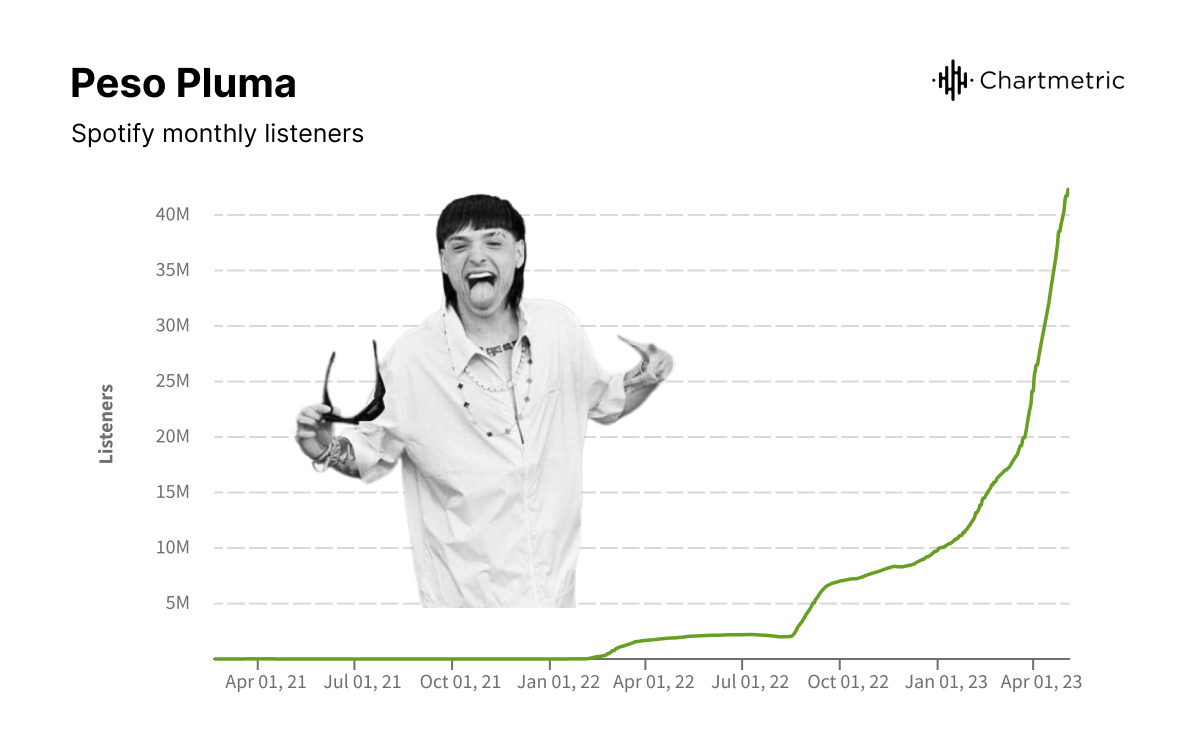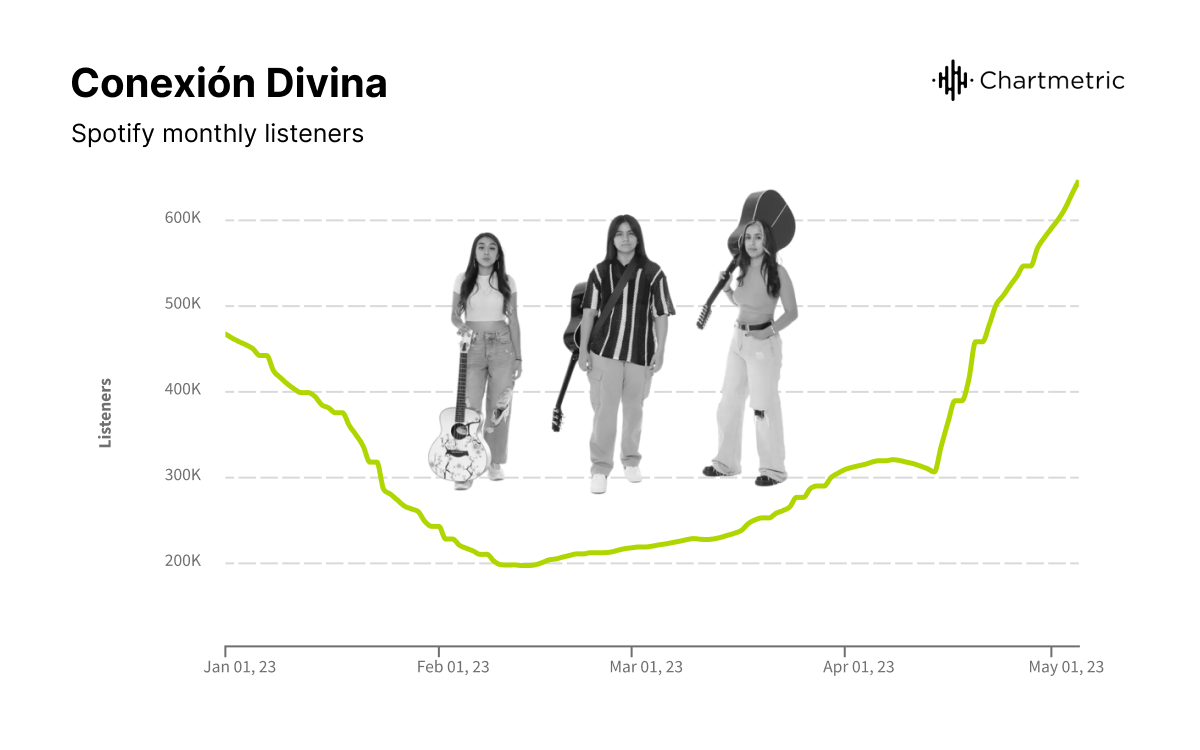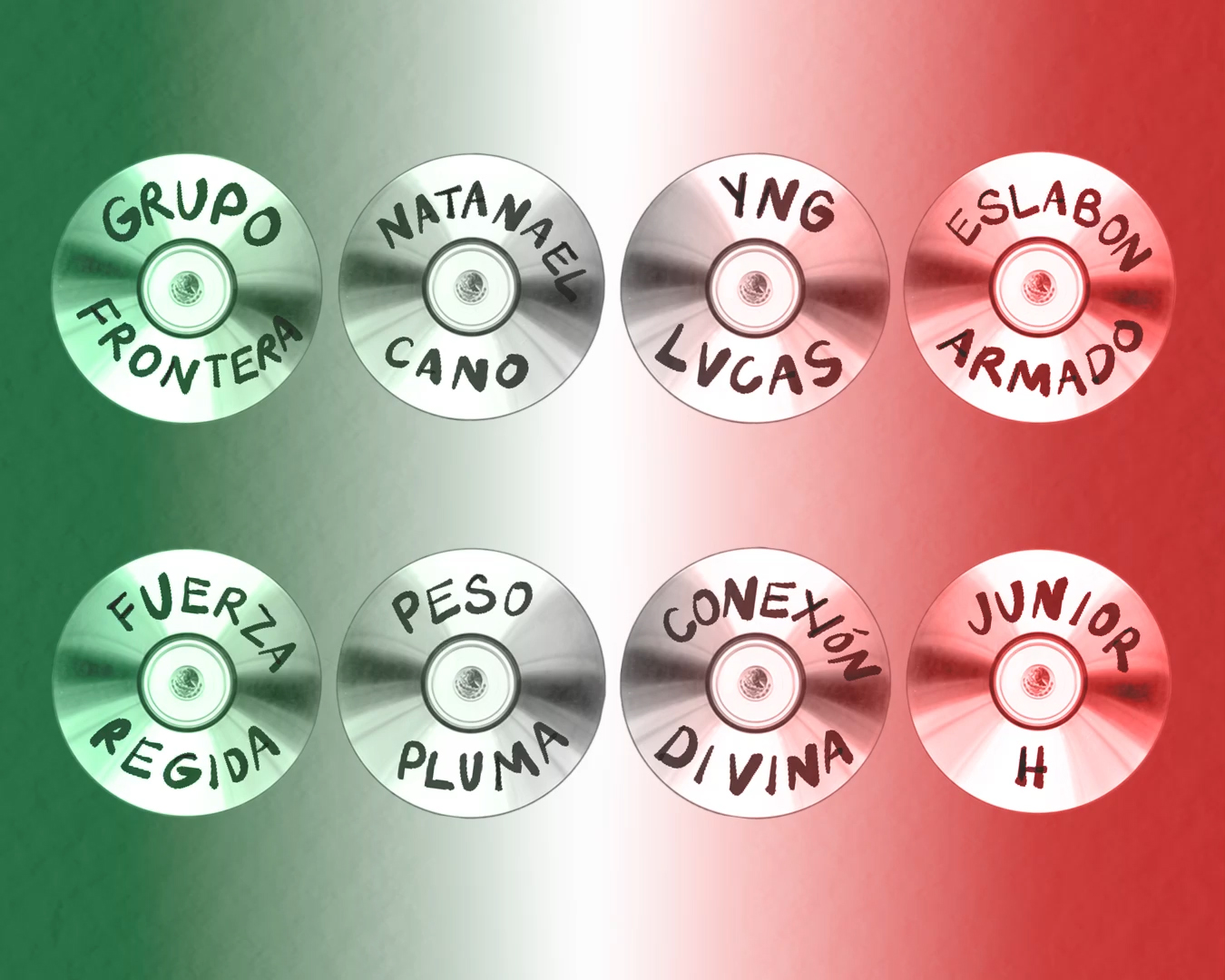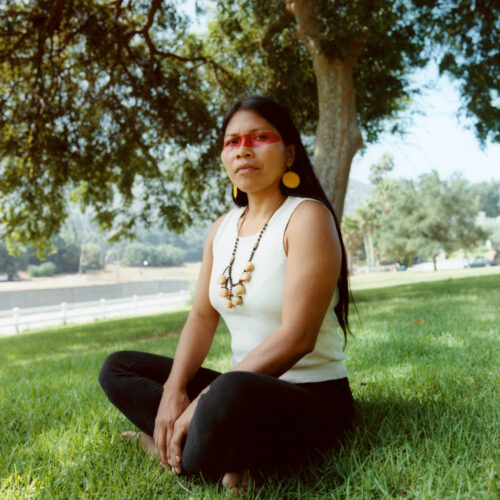Música Mexicana is everywhere right now, and for all the right reasons. Trap corrido, or corridos tumbados, is the mix of regional Mexican sounds with reggaeton and urbano — a new blend pioneered by Gen-Zers that is taking the world by storm.
On April 17, “Ella Baila Sola” by 23-year-old corridos star Peso Pluma and Mexican-American group Eslabon Armado became the first regional Mexican song to make it to the top 10 of Billboard Hot 100. Since then, it has kept climbing up the charts. Now ranking at #5, the song is also #1 on the Billboard Global 200 and on Spotify’s Top Songs Global and Top Songs US. The track is just one of the many corridos that are making it to the top of the charts and putting Mexican culture front and center on the global stage.
“This is not something that has happened overnight,” Maykol Sanchez, Spotify’s Head of Artist & Label Partnerships, LATAM & US Latin told LATINA. “We’ve partnered up with Música Mexicana artists and labels for the past few years and have seen that the genre’s popularity has been on the rise. During last year’s ‘Wrapped,’ there were three Música Mexicana genres in the Top 50 most streamed genres globally.”
In just a couple of years, Peso Pluma, born Hassan Emilio Kabande Laija in Jalisco, Mexico, has gone from construction worker in LA to one of the most listened to artists in the world. The corridos singer recently made a special appearance at Coachella next to fellow Mexican superstar Becky G and was a special guest on The Tonight Show, demonstrating his growing popularity in the U.S.
According to Chartmetric, Peso Pluma went from 12M Spotify monthly listeners in February 2023 to more than 40M in May following the releases of “Ella Baila Sola” and “La Bebe” with Guadalajara-native Yng Lvcas — a track that also made it to the Billboard Hot 100.

Credit: Alejandra Arevalo/Chartmetric
Peso Pluma is just one of the many regional Mexican artists that are making strides in the genre, including independent label Rancho Humilde’s stars Natanael Cano, Junior H and Fuerza Regida, and all-women sierreño trio Conexión Divina. The latter made their Coachella debut this year, leaving their mark in a genre that has mostly been dominated by men. “It’s beautiful that young girls can see us and know that they can do it too,” the group’s requinto guitarist Ashlee Valenzuela previously told LATINA. “We’re writing about women and other minorities and feel like we’re a part of [those communities].”

Credit: Alejandra Arevalo/Chartmetric
The growing popularity of the genre is attracting artists from other genres, including Bad Bunny who recently released “Un x100to,” a collaboration with corridos hit-makers Grupo Frontera. Considering Bad Bunny’s international fan base, the track is serving as an entry point for diverse listeners across the world to listen to regional Mexican music for the first time. “This [collaboration] is creating momentum for the genre to continue its growth outside of the U.S. and Mexico, allowing it to break into other markets globally,” Sanchez said.
While this Música Mexicana wave is helping bring the genre to a wider audience, it has also brought into question many social issues that are pervasive in the Latino community. TikTok content creator Kemocion made a video pointing out that Peso Pluma has skyrocketed to stardom because he is a light-skinned Latino. “Marketers are saying that [he is popular] because he moved the genre of Mexican regional music away from tejanas and boots. What about the artists that came before him?” the creator said, referencing Natanael Cano and Junior H. “I don’t mean he isn’t talented. But because the idea that white means beautiful has been fed to us through telenovelas, people automatically buy into it when they see it.”
@jwitchytv #duet with @kemocion My former students have been making this type of music for years & they’re definitly not light skinned #parati #pesopluma #colorism #mexico #whitexican #telenovelas ♬ original sound – kemocion
Diverse representation in the top ranks of Música Mexicana might be still lacking, but the fact that the genre is growing worldwide shows that the mainstream music scene is progressively becoming more diverse. Despite collaborating with international artists from other genres, Música Mexicana artists aren’t compromising or changing themselves to fit the traditional mold of a global hit. Instead, by being unapologetically themselves and embracing their musical tradition, which includes paying homage to the sounds and artists that came before them, Música Mexicana artists are appealing to Gen Zers — a generation that is very passionate about authenticity and embracing their cultural heritage.
Alejandra Arevalo is a Peruvian multimedia journalist based in New York covering the music industry at Chartmetric.









